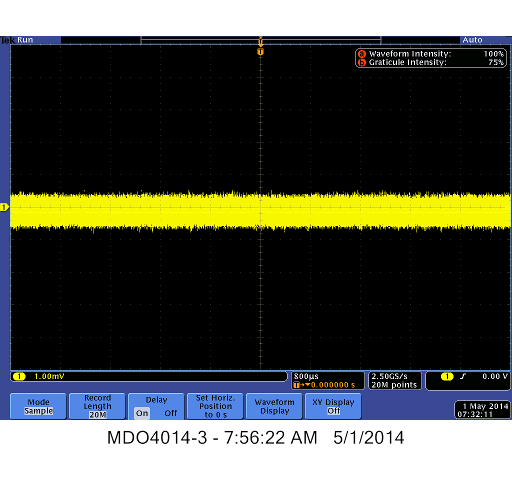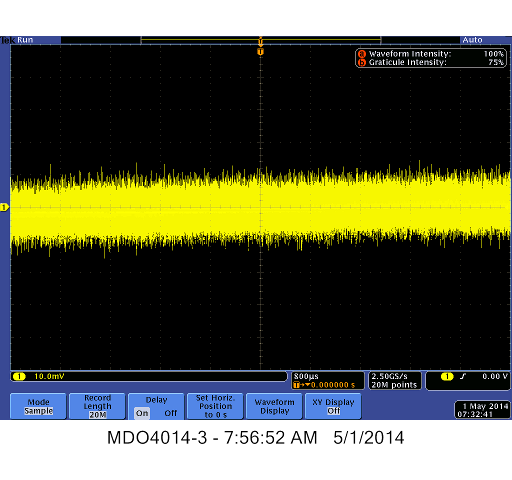Dave Jones of EEVBlog and others have gone to great length to show how the noise shown on newer digital scopes is actually because there better at detecting it due to being able to refresh the screens at better rates and of course because of the digital sampling etc, and for that part I totally get it.
https://www.youtube.com/watch?v=Znwp0pK8Tzk
Well I do if it where not for the fact that at no time has it been explained where the actual noise is coming from in the first place, If i have a probe or other length of wire on the input, then OK it is an antenna and so you expect it and a nice new high bandwidth scope will show it all
but if the input is terminated, shorted out or otherwise not connected surely it should not be there, or certainly not at the levels shown in the videos
If I was paying over 10K for a scope, im sure that it showing 100mV of noise or more when the input is terminated, shorted or otherwise connected to a good signal source, I would be a little upset.
If I am trying to measure single digit noise on a scope and the scope is generating its own far in excess of this then what gives ?
So there you have it, I know we have a Tektronics Expert in our ranks right now, I would be very interested on his/her take on this and of course from anyone else. I for one would love to understand why for my own sake and also to help others understand
Let the debate begin and perhaps we can get a great briefing note out of it
Peter


